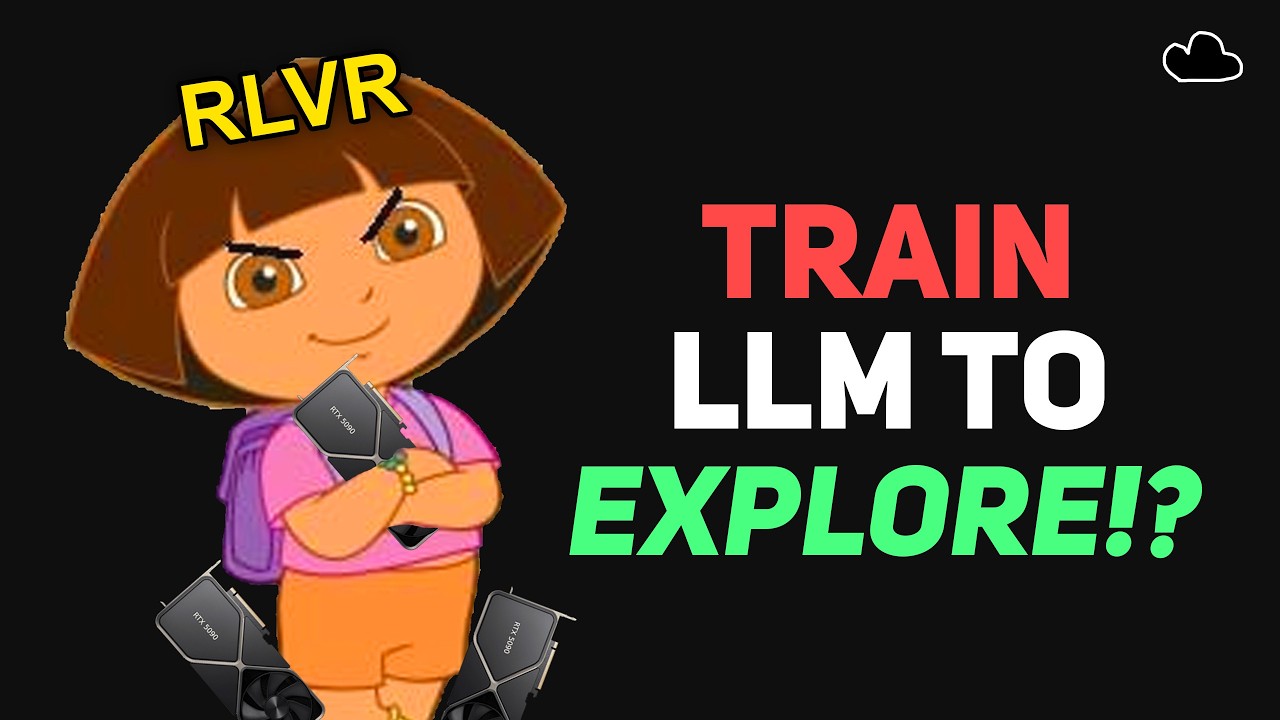The video explores advancements in reinforcement learning with verifiable rewards (RLVR) for large language models by focusing training on high-entropy “forking tokens,” which represent uncertain and pivotal decision points, thereby improving reward precision and learning efficiency. This entropy-based approach enables models to better explore alternative reasoning paths, resulting in enhanced performance, reduced computational costs, and more effective problem-solving capabilities.
The video discusses advancements in reinforcement learning with verifiable rewards (RLVR) for training large language models (LLMs), focusing on improving reward assignment precision. Traditional RLVR methods provide a binary reward signal (success or failure) after generating long token sequences, which dilutes the feedback and slows learning. To address this, researchers propose spotlighting high-impact tokens—those pivotal in determining the model’s output—rather than spreading gradients uniformly across all tokens. Entropy, a measure of uncertainty in the model’s token predictions, is introduced as a key metric to identify these critical “forking tokens” where the model’s decision-making is most uncertain and impactful.
Entropy quantifies how uncertain a model is about the next token, with low entropy indicating high confidence and high entropy indicating uncertainty or multiple plausible continuations. By analyzing entropy patterns, researchers observe that high-entropy tokens often precede low-entropy tokens, suggesting that the model’s trajectory is largely decided at these uncertain points. This insight allows for more precise reward assignment by focusing learning updates on high-entropy tokens, which represent decision points, rather than on low-entropy tokens that are easier to predict and less informative for learning.
One approach explored by Quinn researchers involves ignoring the 80% least uncertain tokens during training, effectively zeroing out their loss and focusing updates only on the top 20% most uncertain “forking tokens.” Experiments show that selectively increasing randomness (temperature) for these forking tokens while keeping it low for others improves model accuracy and efficiency, reducing computational costs by up to 50% while boosting performance by 7-11%. This targeted learning enables the model to concentrate feedback on pivotal reasoning steps, enhancing its ability to solve complex tasks like math problems.
Another study introduces a method that keeps all tokens active during training but adds a small bonus reward to tokens whose entropy exceeds a moving average baseline. This bonus encourages the model to explore alternative paths at uncertain decision points, preventing premature convergence on a single favored solution. Over time, this exploration leads to more diverse and accurate problem-solving strategies, longer and more complete chain-of-thought reasoning, and improved performance on math benchmarks. The entropy-based bonus effectively maintains exploration where it matters most, allowing the model to discover better solutions before entropy naturally decreases.
Overall, the video highlights entropy as a powerful tool for refining RLVR training by enabling fine-grained control over learning signals. By focusing on high-entropy tokens, researchers can improve the precision of reward assignment, leading to more efficient and effective training of LLMs. These early research efforts suggest a promising new direction for RLVR, where models learn not just from final outcomes but from critical decision points within their reasoning processes, potentially ushering in a new era of more capable and creative AI agents.
